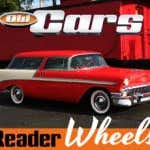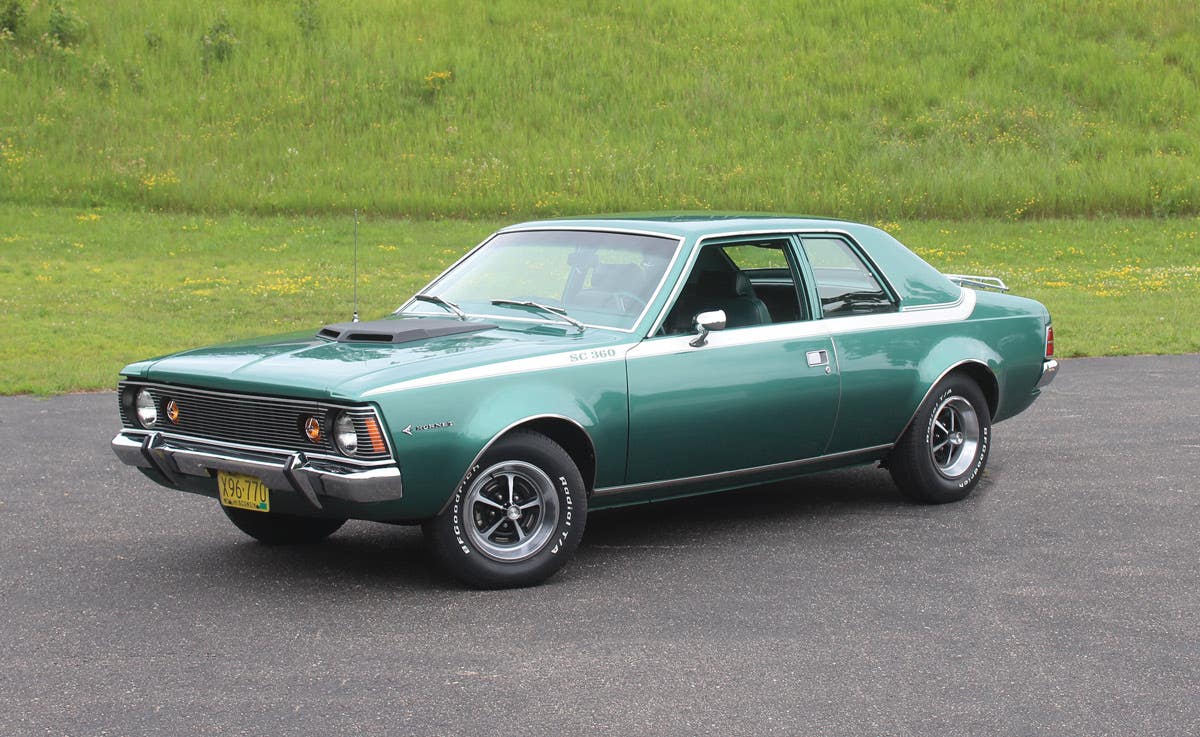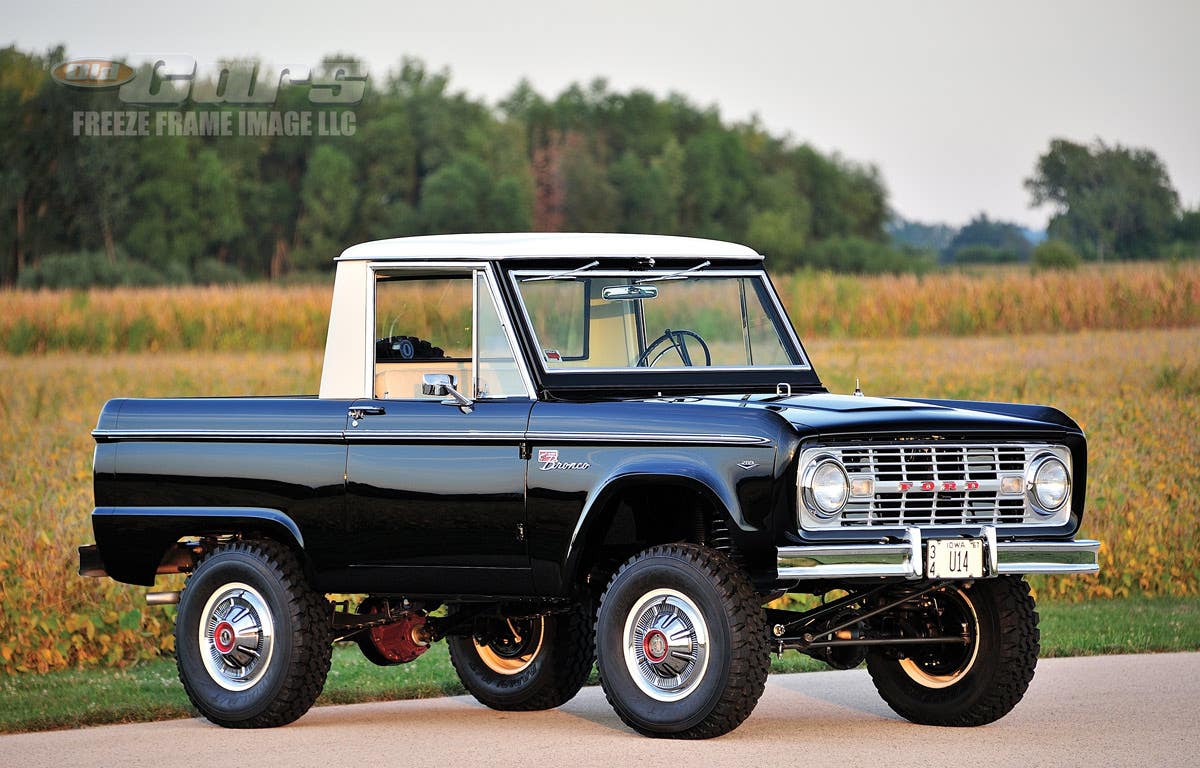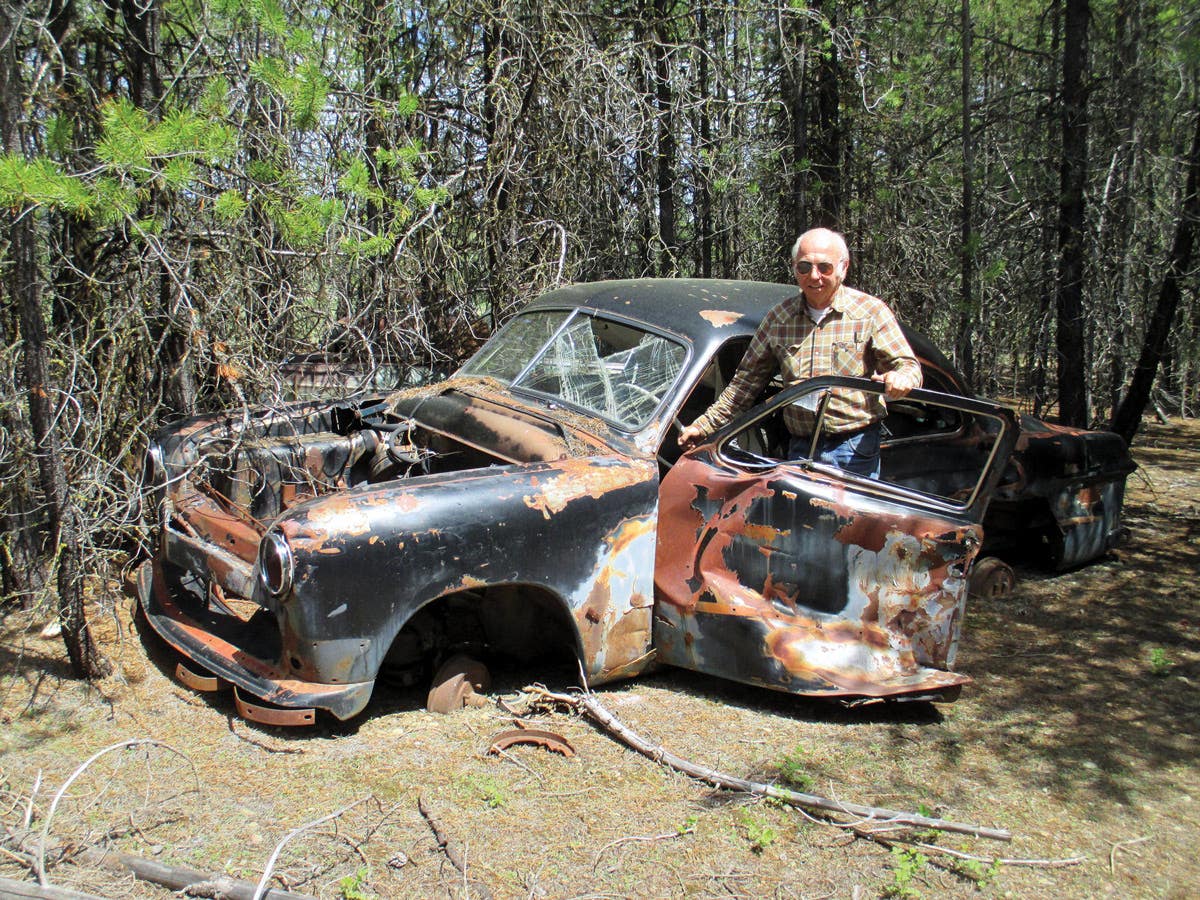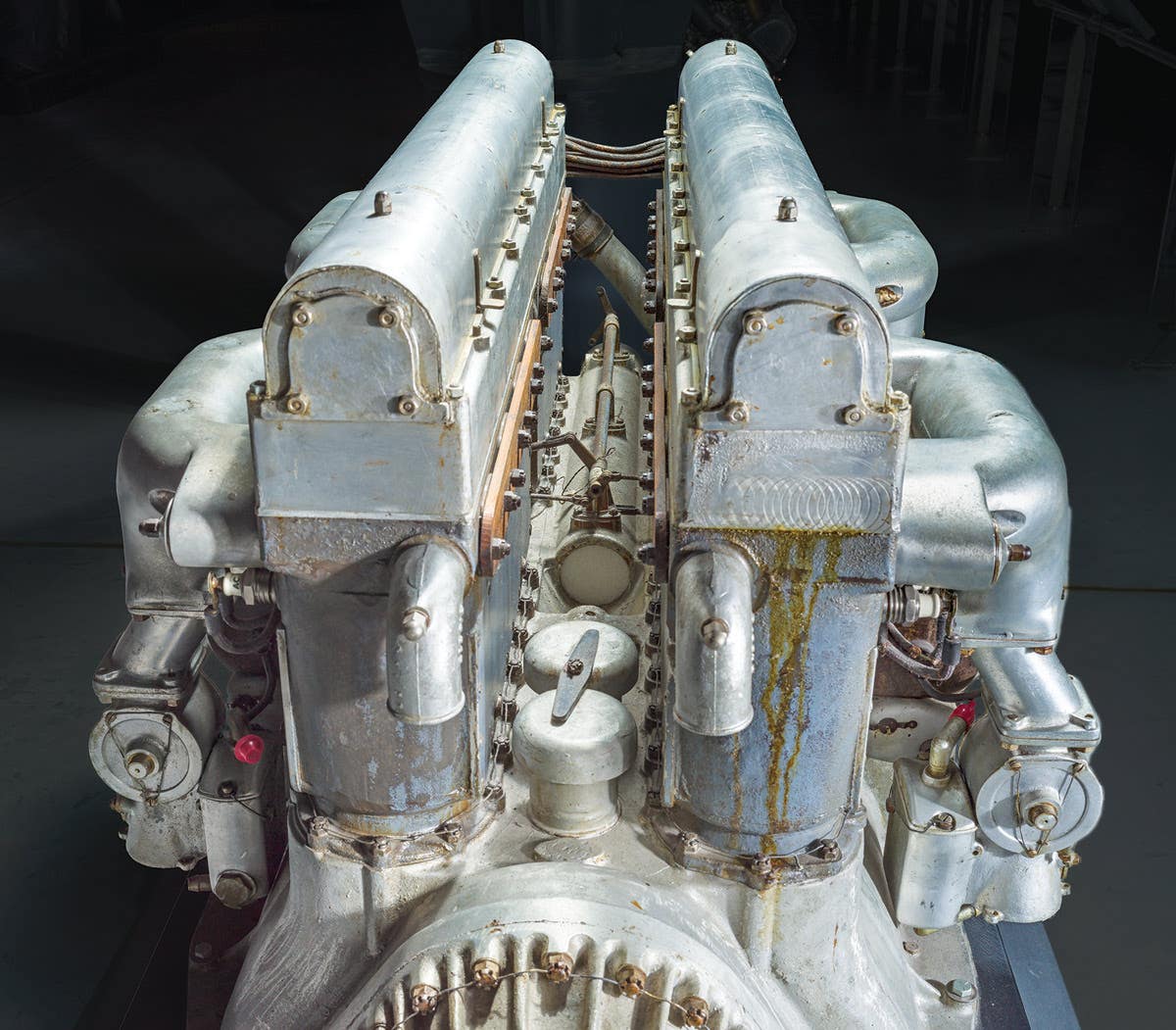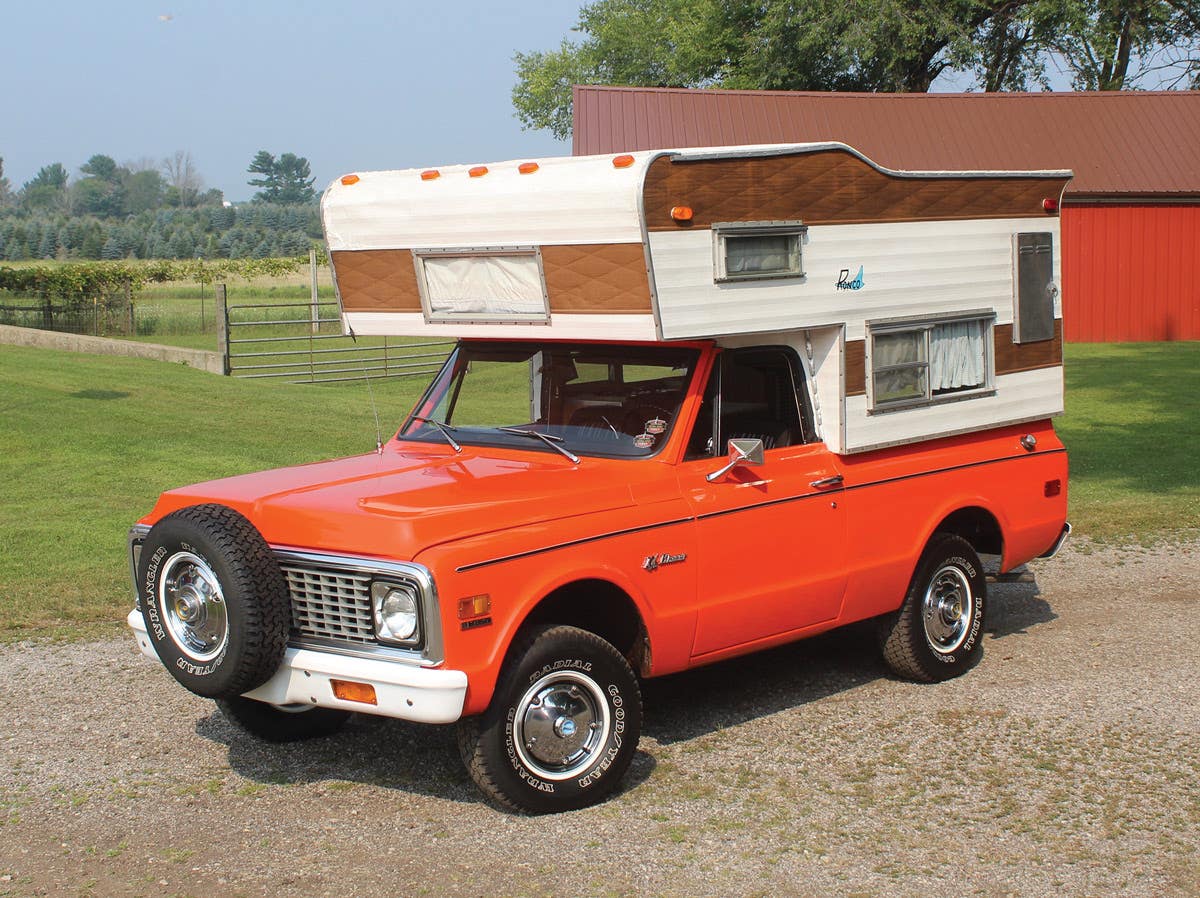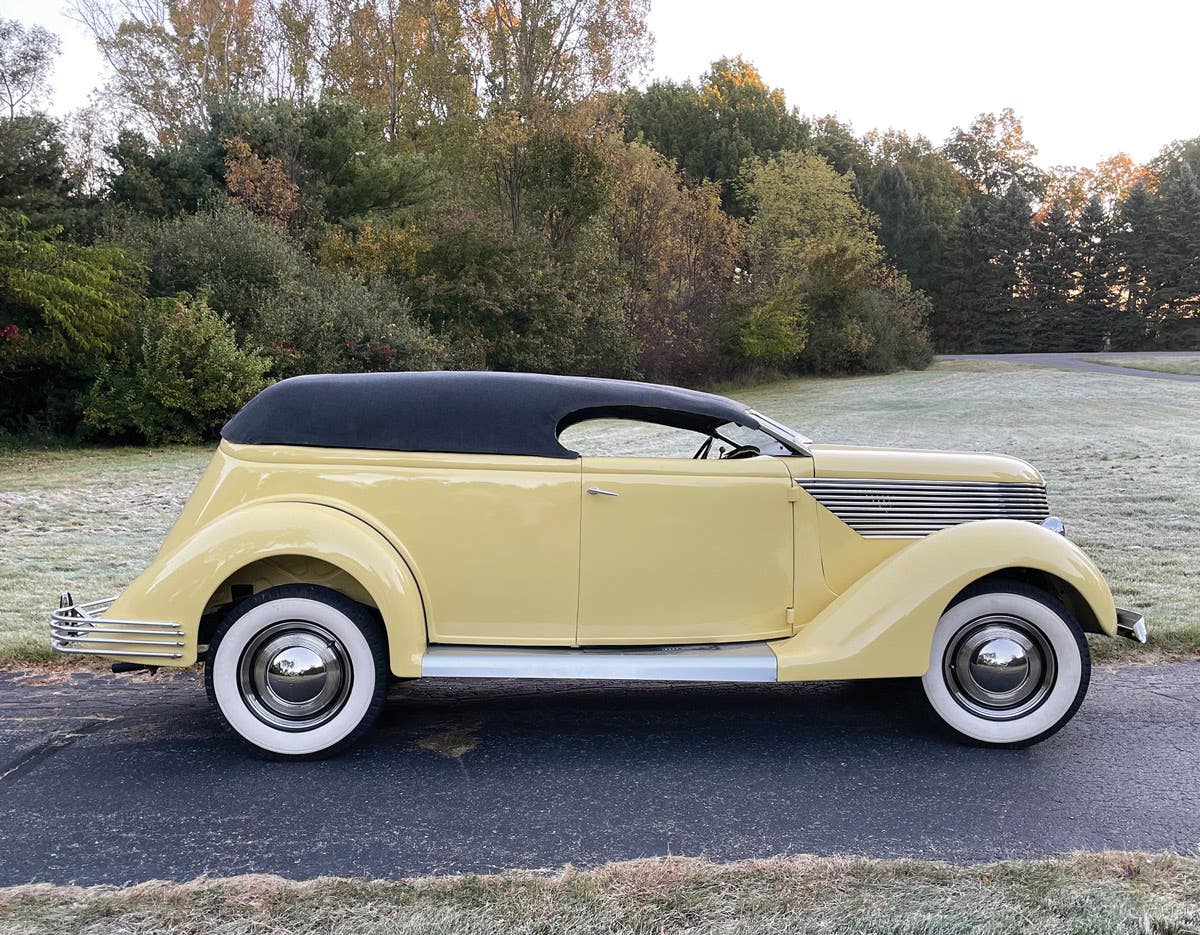Car of the Week: 1968 Ford Fairlane 500 – 428 Cobra Jet
On April 17, 1968, Glenn Wells, a Longview, Texas, resident walked into the local Pegues-Hurst Ford dealership to special order a 1968 Fairlane 500 two-door hardtop.
This story was initiated as the result of a random, seemingly inconsequential act on my part. I gave my copy of the Jan. 1, 2024, issue of Old Cars to a friend, because of its cover story about a 428 Cobra Jet-powered 1968 Torino. My friend owns our featured Fairlane 500 of the same vintage, which also has the 428 CJ, thus the reason for giving him the magazine. A couple days later, that friend called me to tell me an incredible story — he had drag-raced with the original owner of the featured Torino, Billy Ray Sullivan! That was not all, though. That Torino was bought from the same dealership from where his Fairlane was purchased, with only days separating the purchases!
Ordering a Cobra Jet
On April 17, 1968, Glenn Wells, a Longview, Texas, resident and student learning how to perform body work, walked into the local Pegues-Hurst Ford dealership to special order a 1968 Fairlane 500 two-door hardtop. (Incidentally, this dealership began operations in 1915 and continued operating under that name until being sold in 2024.) He checked off a few must-have features listed on the dealer’s order form: W-code 390-hp 427 Cobra V-8, 4.30:1 Traction-Lok axle, AM radio, black all-vinyl interior and special-order Oxford Gray metallic paint (a Thunderbird color).
“I did not know Oxford Gray was a special-order color; I was just looking at the paint chip chart,” said Glenn. (As per Ford’s practice for special-order paint, the paint code was left blank on the car’s VIN plate.) The special-order color selection added $94.60 to the base price of $2,591.07. Packaged with the 427 engine option was the C6 Cruise-O-Matic automatic transmission, the only transmission available with this 427, plus power disc brakes, FR70x14 wide-oval radial-ply tires and the GT handling suspension. Glenn said his dad, “cosigned for me to buy the baddest car on the planet.” The car was to be used for drag racing, which Glenn had been doing for some years by this point. In all, he built and drag raced seven 1958 Ford Fairlanes before deciding to order the 1968 Torino.
The radiator is a custom-built four-row Optima Tri-Cool built by US Radiator. David W. Temple
Not long after placing his order, Glenn received a phone call from the sales agent informing him that the 427 was no longer available. The salesman suggested the 428-cid V-8 as a replacement. Glenn was aware that the 428 was offered for Thunderbirds and full-size models. He also knew it was not really a high-performance engine, but rather offered good low-end torque and was more of an accessories runner (like air conditioning). Glenn had no interest in the 428, thus, disappointed, he canceled the order. He was completely unaware of the new 428 Cobra Jet (CJ) variant.
A few days later, however, Glenn was reading a magazine article about the 1968 NHRA Winternationals in Pomona, Calif. The article mentioned the debut of six 428 CJ-equipped, Ford-sponsored lightweight Mustangs racing in the C/Stock Automatic, Super Stock E and Super Stock E Automatic classes. These cars, prepared for Ford by Holman-Moody-Stroppe in Long Beach, had their 428s hopped up with 427-type connecting rods, a C8AX-C camshaft, dual-point distributor, forged pistons with 11.0:1 compression, Doug or Jardine headers, Detroit Locker rear end with a 4.44:1 ratio and traction bars. (In all, Ford had 50 special lightweight CJ-powered Mustangs built that year.) Those engines differed, though, from the stock type later available to the public. The article reported the Mustangs had an 11.5-second elapsed time at about 120 mph in the quarter-mile competition, greatly impressing Glenn. He reinstated his order with the only change to it being the substitution of the 428 CJ. The base price was $2,591.07, but the options and transportation charge of $106.45 raised the total price paid to $3,727.28.
Glenn’s car was built at Ford’s Atlanta assembly plant on Wednesday, April 30, and a week and a half later, on Friday, May 9, Glenn received his car. Upon arrival of the delivery truck, a Pegues-Hurst employee called Glenn telling him, “I think your car is here.” Glenn was sick in bed, but he was not going to let that stop him from getting his car that day. He and his dad got there in time to watch it being off-loaded from the car carrier. Glenn took possession of the car before it had gone through the typical dealer prep, thus the antenna (which was laying inside the trunk) was not yet installed, though he performed that task later. Glenn took the keys, and to this day, is the only one to drive this car other than the guy who backed it off the trailer.
“The first time I got on that car, it startled me,” he said, which most assuredly convinced him he had not made a mistake with his purchase. It was used exclusively for racing for 47 years and has never been driven for daily transportation.
“It’s been a toy… and is still a toy,” says Glenn. To date, his car has traveled a little more than 16,000 miles since new.
Separated by more than a cubic inch
The W-code 427 engine originally ordered for Glenn’s car had hydraulic lifters, a 10.9:1 compression ratio, open-element air cleaner, reached its peak output at 5,600 rpm and had a torque rating of 460 lb.-ft. at 3,200 rpm. Was the 390-hp 427 engine ever actually available for the Fairlane/Torino series? Ford’s earliest brochure on this line of cars (as well as the brochures for the Mustang and Mercury’s Cyclone) listed the four-barrel 427 as an option for two-door hardtop and fastback models. Even Ford’s full-size XL was supposedly going to be available with the 427. In the end, only 357 Mercury Cougar XR-7 GT-Es (a mid-year model) received the “W” engine while another 37 received the R-code 428 CJ, though there are rumors of some ’68 Mustangs getting the 427. Regardless of those claims, no proof has surfaced to date to support the rumors. In fact, Kevin Marti, of Marti Report fame, has searched Ford’s 1968 build records and his efforts revealed not a single production 1968 Ford-badged automobile was equipped with this short-lived engine. Prototype 1968 Mustangs with the 427 appear to have been built and tested, but none of those cars are known to have survived. The 427’s complicated block suffered from core shift during manufacturing. This, combined with strict build tolerances, proved to make the engine too costly to build. Illustrating this point is the fact that the 427 listed for $622 (another source claimed in excess of $700) versus the $306.27 extra Glenn paid for the 428 CJ.
In announcing the new engine, Ford said, “This new 428 Cobra Jet V-8 provides a high-performance engine for street use... that is simpler to maintain than the 390hp 427 cubic-inch V-8 developed directly from Ford Motor Company’s racing engines.”
to the far right is out of frame and has a tachometer mounted in it. David W. Temple
Ford released its original 427 with mechanical lifters on Feb. 15, 1963, in two states of tune – 410 hp (single four-barrel) and 425 hp (dual four-barrel carburetors). The 427 was another variant of Ford’s FE series V-8 which debuted for the 1958 model year in 332- and 352-cubic-inch displacements. Over the next few years, it grew to 390 and 406 cubic inches before reaching 427 cubic inches. (There were also truck versions, such as the 360, and a 361 for the short-lived Edsel.) The 427 was built with durability in mind for the 500-mile races of NASCAR. The later 390-hp version was a bit tamer than the preceding solid-lifter 427. The thin cylinder walls of the 427 made regular production line assembly impractical while the smaller bore of the 428 solved this issue, and additionally, its longer stroke offered improved low-end torque.
Bore-and-stroke measurements of the 428 were 4.13 and 3.98 inches, respectively, while the 427’s were 4.23 and 3.78 inches. Actual displacement of the 427 measured a trace under 425 cubic inches, but Ford was not going to round down to 424. Rounding to 425 may have been undesirable since Oldsmobile had a 425 while Plymouth and Dodge offered the 426 Hemi. Advertising the displacement as 427 cubic inches was a good marketing move. As for the 428, it actually displaced 426.56 cubic inches; labeling it as a 427 would have clearly been confusing to the public, thus it was rounded up, too.
Special features of the new 428 CJ included cylinder heads with 2.06-inch intake valves, 1.66-inch exhaust valves, intake ports measuring 1.34 by 2.34 inches, exhaust ports with dimensions of 1.28 by 1.84 inches and a 16-bolt-pattern exhaust face specific to the CJ heads. Furthermore, the CJ had a crankshaft specific to it, as well as dished pistons, a 10.6:1 compression ratio, special cast-iron exhaust manifolds and a 735-cfm four-barrel carburetor mounted atop a cast-iron intake manifold based upon the aluminum police interceptor type. Maximum output of the 428 CJ was officially listed as 335 hp at 5,600 rpm, although this was deliberately underrated. A Hot Rod magazine dyno test performed in 2016 of a stock, freshly built CJ engine peaked at 365 hp at 4,800 rpm. With the engine broken in, output was estimated at 375 hp, though with headers, 400 hp was expected. Torque, by the way, registered 452 lb.-ft. at 3,700 rpm, a bit higher than the 445 lb.-ft. at 3,400 rpm figure quoted by Ford in 1968.
1958 Fairlanes he rebuilt for drag-racing before purchasing the feature car. Photo courtesy of Glenn Wells
A Torino all his own
Multiple engines, including a Boss 302, have been installed in Glenn’s Fairlane 500 over the decades. Not long ago, it was running a 390 modified with .030 TRW pistons with 12.5:1 compression; balanced rods and crank; 324-degree Ford cam with .500 lift and dual springs; C6AE-(R) heads with CJ valves; Holley high-performance mechanical pump; 110-gph electric pump; high-volume oil pump with ARP drive; and the exhaust gases exiting via Blue Flame headers and 2.5-inch exhaust pipes, H-pipe and Flowmaster mufflers. During 2023 and into 2024, it underwent yet another engine swap, resulting in the reinstallation of the car’s original block, rods and crankshaft. Glenn, along with his good friend and ace mechanic, Russell Chandler, completed this work and gave it some nice undercarriage detailing; a lot of burned rubber was removed from the rear of the car.
“I could not have done it without my good friend,” noted Glenn.
Upgrades to the car’s engine include Edelbrock aluminum heads; Victor intake manifold; Melling high-volume oil pump and ARP drive; custom-grind camshaft by Oregon Cam; flat hydraulic tappets; Harland Sharp rocker arms; Crane push rods; Cloyes True Roller timing set; Holley electric fuel pump and a Carter X mechanical fuel pump; Quick Fuel 735-cfm carburetor; Snow Water methanol injection; MSD ignition; Shelby plug wires; and Canton oil pan and windage tray. The exhaust system is comprised of 428 CJ exhaust manifolds and 2.5-inch exhaust pipes with Flowmaster “Flo X” mufflers. All exhaust pipe hangers were custom-built and installed by Glenn.
Upgrades to the car’s original C6 transmission include an R-code servo, Hughes valve body and torque converter, B&M deep transmission fluid pan and Derale transmission fluid cooler. As for the rear end, it is, of course, a Ford 9-inch, now with Detroit Locker 3.89:1 gearing and 31-spline axles.
Stopping power is provided by the stock front discs and rear drums.
Glenn drag raced his Fairlane at tracks in Texas and Arkansas for decades. About 18 years ago, he quit drag racing the car and he and his wife, Ruby, now take it to car shows in the East Texas area. Glenn’s trophy case is getting quite full, too.
Some will, no doubt, cringe at the fact that a car this rare is not totally stock, but in 1968, Glenn had no thoughts of keeping the car for nearly six decades, and he had no expectation of the car becoming a collectible. The side trim was removed when the car was repainted around 1975 and there were suspension modifications. The rear wheel openings were slightly enlarged for tire clearance, too. Glenn bought his Fairlane for drag racing and it is modified for high-performance, quarter-mile driving, as well as to suit his personal tastes. Originality and collectibility simply were not factors until many years later. Even now, those matters are of no great importance to Glenn. He says his car is exactly the way he wants it.
Incidentally, Glenn purchased a rare 1968 hydraulic lifter 427 not long ago and it will go in a 1964 Fairlane Thunderbolt replica he is building, so he will finally have that 427-powered Fairlane after all these years.
Love Fairlanes? Here are a few more articles for your reading enjoyment.
SHOW US YOUR WHEELS!
If you’ve got an old car you love, we want to hear about it. Email us at oldcars@aimmedia.com
If you like stories like these and other classic car features, check out Old Cars magazine. CLICK HERE to subscribe.
Want a taste of Old Cars magazine first? Sign up for our weekly e-newsletter and get a FREE complimentary digital issue download of our print magazine.


